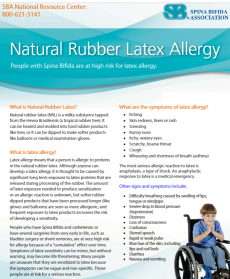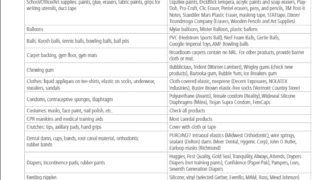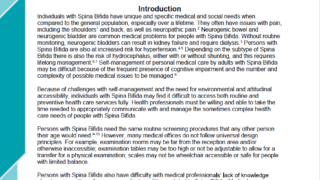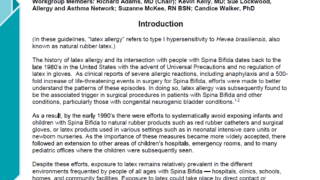People with Spina Bifida are at high risk for latex allergies.
What is Natural Rubber Latex?
Natural rubber latex (NRL) is a milky substance tapped from the Hevea Brasiliensis (a tropical rubber tree). It can be heated and molded into hard rubber products like tires, or it can be dipped to make softer products like balloons or medical examination gloves.
What is latex allergy?
Latex allergy means that a person is allergic to proteins in the natural rubber latex. Although anyone can develop a latex allergy, it is thought to be caused by released during processing of the rubber. The amount of latex exposure needed to produce sensitization or an allergic reaction is unknown, but softer rubber dipped products that have been processed longer (like
gloves and balloons) are seen as more allergenic, and frequent exposure to latex products increases the risk of developing a sensitivity.
People who have Spina Bifida and catharize; or have several surgeries from very early in life, such as bladder surgery or shunt revisions, are at very high risk for allergy because of a “cumulative” effect over time. Symptoms of latex sensitivity can be minor, but without warning, may become life-threatening. Many people are unaware that they are sensitized to latex because the symptoms can be vague and non-specific. Those people are at risk for a serious reaction.
What are the symptoms of latex allergy?
• Itching
• Skin redness, hives or rash
• Sneezing
• Runny nose
• Itchy, watery eyes
• Scratchy, hoarse throat
• Cough
• Wheezing and shortness of breath (asthma)
The most serious allergic reaction to latex is anaphylaxis, a type of shock. An anaphylactic response to latex is a medical emergency.
Other signs and symptoms include:
• Difficulty breathing caused by swelling of lips, tongue or windpipe
• Severe drop in blood pressure (hypotension)
• Dizziness
• Loss of consciousness
• Confusion
• Slurred speech
• Rapid or weak pulse
• Blue hue of the skin, including lips and nail beds
• Diarrhea
• Nausea and vomiting
Latex items
Because of its low cost, durability, and versatility, natural latex has been widely used in the United States for over a century; and is used in the production of many common items. Although most medical products are labeled, household or recreational items which contain latex may not be labeled.
Latex Allergy Fact Sheets and Other Materials
Permission to use the materials found in the Latex Allergy Toolbox has been granted by the Allergy & Asthma Network. The toolkit features a variety of fact sheets and other materials for health care providers, parents, students, school staff, and others, including:
- Parent and practitioner resources
- Latex and vaccines
- School resources
- Allergy & Asthma Network webinars
Latex Allergy and Foods
Parents and patients should be aware that caution should be taken regarding what has come to be labeled “latex-fruit syndrome.” Research has shown that some foods have proteins that are like those in rubber tree sap. Sometimes people with latex allergies experience a reaction to “latex reactive foods.” This may be referred to as latex-food syndrome or latex-fruit allergy. Latex reactive foods include primarily nuts and fruit, but also some vegetables.
Foods with a high degree of latex allergy association or prevalence:
- Avocado
- Banana
- Chestnut
- Kiwi
Foods with a moderate degree of latex allergy association or prevalence:
- Apple
- Carrot
- Celery
- Melons
- Papaya
- Potatoes
- Tomatoes
Foods with low or undetermined latex allergy association:
Apricot, Buckwheat, Castor Bean, Cayenne Pepper, Cherry, Chick Peas, Citrus Fruits, Coconut, Dill, Fig, Grape, Hazelnut, Lychee, Mango, Nectarine, Oregano, Passion Fruit, Peach, Peanut, Pear, Persimmon, Pineapple, Plum, Rye, Sage, Shellfish, Soybean, Strawberry, Sunflower Seed, Sweet Pepper, Walnut, Wheat, Zucchini.
This information does not constitute medical advice for any individual. As specific cases may vary from the general information presented here, SBA advises readers to consult a qualified medical or other professionals on an individual basis.
Tags



